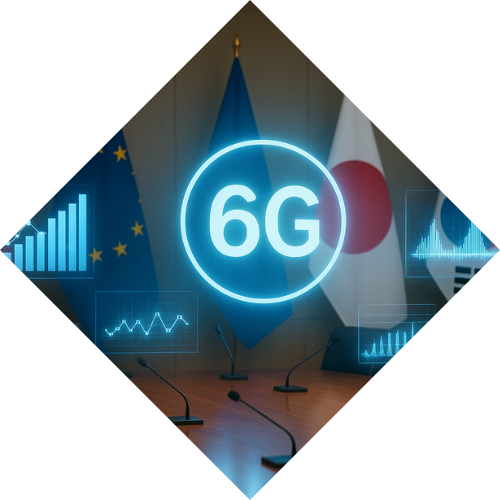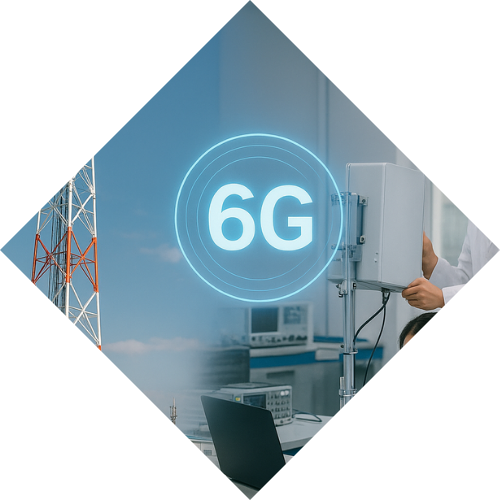Introduction
As 5G networks continue their global rollout, the world’s major economies are already racing toward the next frontier: 6G. Promising data speeds up to 100 times faster than 5G, 6G is envisioned as the backbone of immersive technologies such as holographic communication, tactile internet, AI-driven smart cities, and quantum-secure networks.
But beyond technology, 6G is shaping up to be a geopolitical battleground. China has placed 6G research at the heart of its 14th Five-Year Plan (2021–2025), signaling its intent to dominate global telecom standards and secure a strategic advantage. Meanwhile, the U.S., Japan, South Korea, and Europe are all accelerating their own programs, making the race to define 6G not just an engineering challenge, but a contest of influence.
What Is SparkDesk?
As 5G networks continue their global rollout, the world’s major economies are already racing toward the next frontier: 6G. Promising data speeds up to 100 times faster than 5G, 6G is envisioned as the backbone of immersive technologies such as holographic communication, tactile internet, AI-driven smart cities, and quantum-secure networks.
But beyond technology, 6G is shaping up to be a geopolitical battleground. China has placed 6G research at the heart of its 14th Five-Year Plan (2021–2025), signaling its intent to dominate global telecom standards and secure a strategic advantage. Meanwhile, the U.S., Japan, South Korea, and Europe are all accelerating their own programs, making the race to define 6G not just an engineering challenge, but a contest of influence.

China’s 6G Strategy in the 14th Five-Year Plan
China’s state-led innovation model gives it the ability to channel resources into national priorities at scale. In the 14th Five-Year Plan, 6G is explicitly highlighted as a strategic emerging technology alongside AI, quantum computing, and biotechnology.
Key elements of China’s 6G strategy include:
National Research Teams: The Ministry of Science and Technology (MOST) and industry partners like Huawei, ZTE, and China Mobile are leading 6G R&D.
Massive Investment: Billions of yuan are allocated to next-generation network research, testbeds, and standardization efforts.
Satellite-Terrestrial Integration: China envisions 6G as a hybrid of terrestrial base stations and low-orbit satellites for global coverage.
Early Deployment Timeline: Prototypes are expected by 2026, with commercial rollout around 2030.
By embedding 6G into its central development strategy, China is signaling that leadership in telecom standards is as critical as leadership in semiconductors and AI.
The Global Standards Debate
Telecommunications standards have long been a strategic asset. Whoever shapes the rules of 6G—protocols, patents, and security frameworks—gains significant leverage in the global economy.
China: Actively pushing its proposals in the International Telecommunication Union (ITU) and other global standards bodies. Its state-backed firms already hold significant 5G patents, a trend likely to continue in 6G.

United States: Focusing on private-sector innovation, with companies like Qualcomm, Apple, and Google working on 6G technologies, supported by the Next G Alliance.
Europe: The EU’s Hexa-X program, led by Nokia and Ericsson, seeks to ensure Europe plays a central role in defining open, secure 6G standards.
Japan & South Korea: Both countries see 6G as a natural extension of their leadership in consumer electronics and telecom infrastructure, with companies like Samsung and NTT DoCoMo heavily investing.
This competition reflects not only economic rivalry, but also security concerns—as nations want to avoid dependency on foreign technologies for critical infrastructure.

Geopolitical Implications
U.S.–China Rivalry
Just as 5G became a flashpoint in U.S.–China relations, 6G may intensify the rivalry. The U.S. blacklisting of Huawei over 5G networks was a clear indication of how telecommunications is now a matter of national security, not just commerce.
Tech Sovereignty
Nations view 6G as essential for maintaining digital sovereignty. Dependence on another country’s telecom infrastructure could create vulnerabilities in defense, finance, and critical services.Alliances & Partnerships
Countries are forming partnerships to counterbalance China’s state-driven model. For example, the Quad (U.S., Japan, India, Australia) is exploring telecom cooperation, while the EU is investing in cross-national 6G research projects.Economic Edge
Controlling 6G standards could mean trillions of dollars in economic value—through patents, royalties, and leadership in industries enabled by ultra-fast connectivity.
Technical Vision for 6G
6G is not just a faster 5G. It represents a paradigm shift, combining advances in multiple domains:
Speeds up to 1 Tbps (vs. 10 Gbps in 5G).
Sub-THz and Terahertz spectrum use for ultra-fast data transmission.
AI-native networks, where optimization and resource allocation are managed autonomously.
Holographic and tactile internet, enabling real-time immersive experiences.
Quantum and blockchain integration for secure communications.
Global coverage via satellite-6G convergence.
China’s research groups are already testing 6G satellites, signaling their ambition to lead not just on Earth, but also in space-based connectivity.
Balancing Innovation with Security & Ethics
While the race for 6G leadership accelerates, ethical and security concerns must not be overlooked. Issues such as data privacy, cybersecurity, digital inequality, and environmental impact will be magnified at 6G scale.
Governments, industry players, and civil society must ensure that 6G networks:
Protect privacy with secure-by-design frameworks.
Avoid monopolization by ensuring open, interoperable standards.
Bridge the digital divide, so that rural and developing regions are not left behind.
Address environmental costs, since ultra-dense networks and satellites require significant energy.
Conclusion
6G is more than just a technological upgrade—it is a strategic frontier shaping the balance of global power. For China, embedding 6G in the 14th Five-Year Plan underscores its ambition to lead the world in telecom infrastructure and standard-setting. But the outcome of the 6G race will not be determined by technology alone; it will also hinge on diplomacy, alliances, and ethical governance.
The world faces a choice: 6G can either become a tool of fragmentation and rivalry, or it can serve as a platform for global cooperation and inclusive connectivity. The policies and partnerships formed today will decide which path we take by the time 6G goes mainstream in the 2030s.






